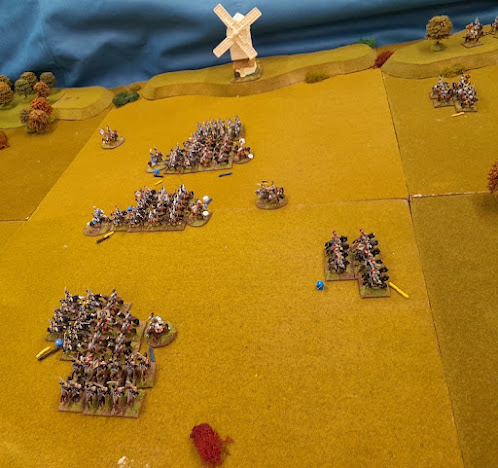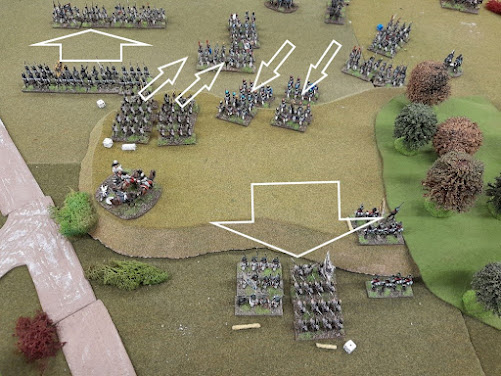The excellent Jonathan of Palouse Wargaming Journal fame, hosted the Rejects in a remote game of the Battle of Montebello from the Franco-Austrian War of 1859.
This will now take more than one sitting. Rather than one very long report, I thought that I'd split it in two. So here is Part 1.
As usual the preparations were impeccable. Jonathan had been asked to increase the fog of war and he certainly did a great job of that.
Background
In short, and using part of Jonathan's briefing:
"On 9 May, Austrian FZM Gyulai’s uninspired offensive in Piedmont ground to a halt without ever contacting the enemy. Concerned that the French would attempt to turn his left flank by advancing upon Piacenza, FML Stadion’s V Corps was ordered (20 May) across the Sesia River and move on Casteggio and Voghera. This reconnaissance-in-force was determined to discover French dispositions, interdict the Voghera-Piacenza Road, and thwart these perceived threats. As the Austrians approached Casteggio, they ran into Sardinian cavalry screens. The Sardinian mission, deployed east of
Voghera, was to act as an early warning system to prevent surprise attacks from the Austrians. The Sardinian light cavalry were to hinder any enemy movements westward buying time for the French army to come up, if needed. The only means of crossing the River Coppa in this area are via two bridges: the bridge at Casteggio and the railroad bridge to the north of that town. Running from Genestrello north, the Fossa Gazzo can be crossed everywhere but with difficulty. The railroad bridge at Casina Nuova and the bridge near Genestrello are the best places to cross the Fossa Gazzo."
The Austrians pushed on to Genestrello and Montebello. The French arriving from the west now took up the fight.
This was the photo of the battlefield that Jonathan supplied. The Austrians and Sardinians are there somewhere. This induced a wonderful level of uncertainty and surprise.
Sides
The Austrian army were commanded by Lee, Steve and David.
The French/Sardinian force were controlled by me, Ray and Surjit
Victory conditions
There were different conditions for each side. Neither were made aware of the other's
Rules: amended Fields of Honor on a grid
Figures: 15mm
Victory Conditions: Assessed at the end of the battle based upon army objectives.
Break Points assessed at Brigade level. No Army Breakpoint Sudden Death.
The Battle
This was to be our first sight of the table occupied with troops.
This first screen shot is from the northern end facing south. The scattered Sardinian cavalry can be seen milling around.
 |
| view from the south looking north |
 |
| view from the north looking south |










































